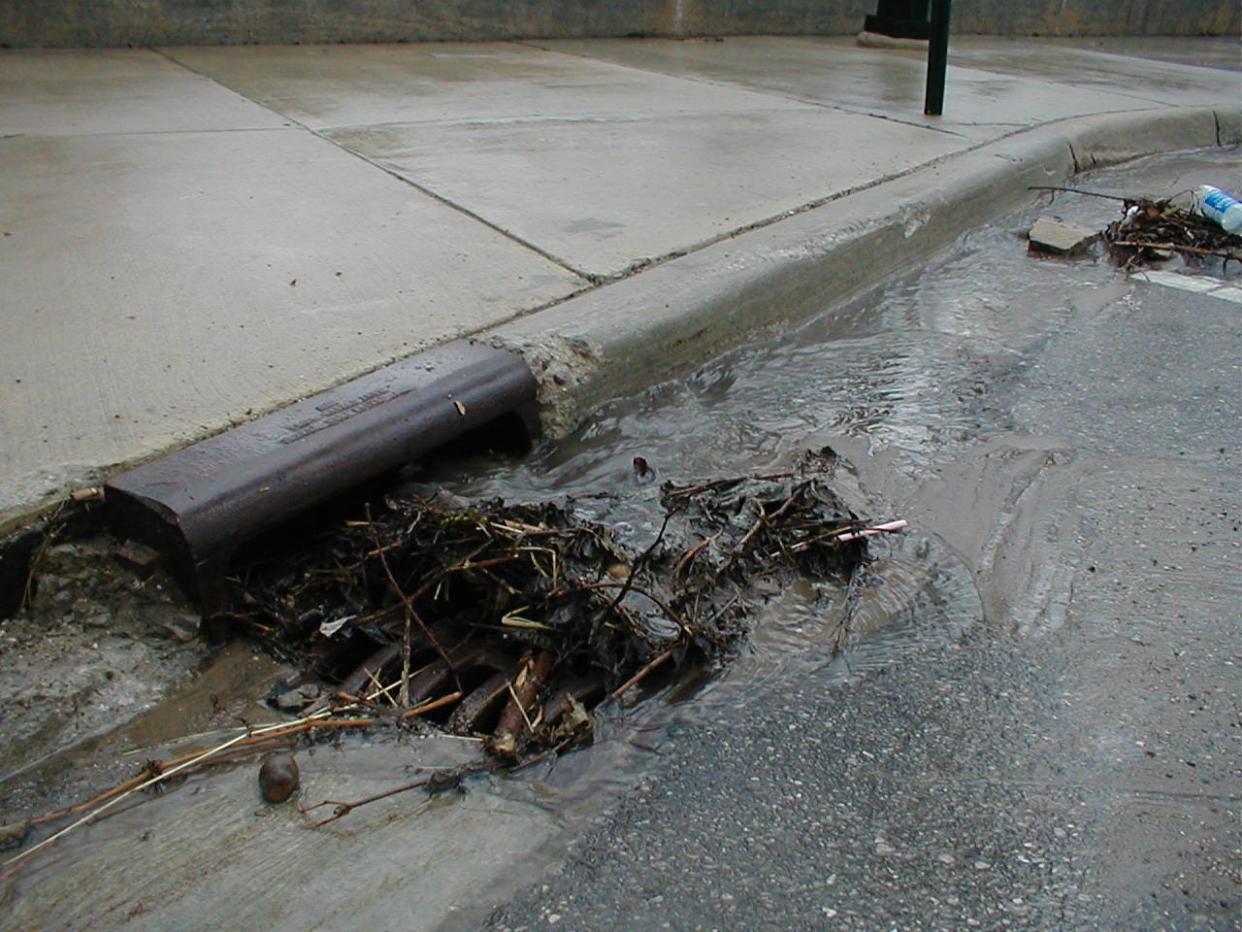Tip of the Mitt Watershed Council: A story of ordinances: How local laws protect Michigan’s most precious resource

It began with a simple letter.
In a 2006 response to a Grand Traverse County developer working on projects in our irreplaceable wetlands, a former Michigan Chief Deputy Attorney General sent a letter stating that townships and villages can regulate stormwater flooding, but not counties. The problem: Michigan counties had already been broadly regulating stormwater under the assumption it was within their jurisdictions. As word got out about the letter, many Michigan counties rushed to revoke their stormwater ordinances.
“When water from a storm accumulates and flows across a landscape and there’s no control for it, it pollutes the waters you care about,” said former Watershed Council Watershed Policy Director Grenetta Thomassey. “We’re talking grit and grease, gas, oil, pesticides, cigarette butts, pet waste, and plastics.” After the letter was sent, some of the county-level protections and resources to manage stormwater were simply gone.
Fortunately, in some communities the outcome was positive as people pulled together to regulate stormwater. Thomassey reported that, in Grand Traverse County, townships, villages, and cities passed the same level of protections that had previously been available at the county level. Every township, village, and city in Charlevoix County (except for one township without surface water features) has adopted stormwater ordinances that are enforced by the Charlevoix County Soil Erosion and Sedimentation Control Officer. These ordinances are critical in the face of the mounting impacts of climate change predicted to include more precipitation and intense stormwater events.
This is a story of ordinances. They’re ordinary, everyday laws that have a big impact on the waters you love.
Here at Tip of the Mitt Watershed Council, Policy and Advocacy Specialist Kacey Cook does a lot of work on ordinances. In some ways, ordinance work is the backbone of our organization because these laws enforce protections for the waters we all rely upon in Northern Michigan.
An ordinance is a law that’s passed at the local level. An ordinance is only valid within a government’s jurisdiction; for example, Emmet County can’t pass an ordinance and expect residents of Antrim County to follow it.
There are a few different types of ordinances. The Watershed Council is interested in ordinances that deal with water resources, which are often zoning ordinances. These regulate land use and are the ones most often associated with environmental protection. They include septic regulation ordinances, greenbelt ordinances, and wetland protections, among others.
Why are ordinances so important for the Watershed Council and your enjoyment of Michigan’s waters? They fill in the gaps of environmental protections. Local governments have distinct powers and concerns compared to the State of Michigan and federal officials. For example, wetlands are crucial for watershed health. However, wetlands under five acres can only be regulated by local governments. The fate of small wetlands can make a huge difference for water quality, so we help guide ordinances to protect those precious resources and more.
In the case of stormwater ordinances, Charlevoix County Soil Erosion and Sedimentation Control Officer Russ Smith deals with commercial and residential construction. “It’s difficult to control stormwater during a project because nothing is stabilized,” said Smith. “There’s no grass or trees, and bare soils are apt to erode more easily.” A common task for Smith is to ensure soil or silt fences, which capture sediments that are washed from construction sites when it rains, are installed properly. This prevents soil and pollutants from gushing into nearby lakes and streams.
Staff support the development of local ordinances in a lot of different ways. We draft model ordinances so that local governments can see best-case scenarios for protecting water quality. We make recommendations for ordinances that are missing and support the improvement of ordinances that need to be strengthened, such as shoreline ordinances that need an upgrade to address climate resiliency. We also work to ensure the ordinances are enforced properly.
The public has an important role to play in promoting water quality protections at the local level. The first step is to learn more about our systems of local government and the local laws in place in our communities. Citizens can attend public meetings to support the development of ordinances that protect the natural resources we treasure. By building relationships with our local government officials and participating in the processes that shape our local laws, we can ensure our ordinances address the issues and represent the values most important to our Northern Michigan communities.
For more information about our local ordinance work, contact Kacey Cook at 231-347-1181, ext. 1118, or at info@watershedcouncil.org.
— Jennifer DeMoss is communications director for the Tip of the Mitt Watershed Council. Contact her at jenniferann@watershedcouncil.org.
This article originally appeared on The Petoskey News-Review: Tip of the Mitt Watershed Council: A story of ordinances: How local laws protect Michigan’s most precious resource

